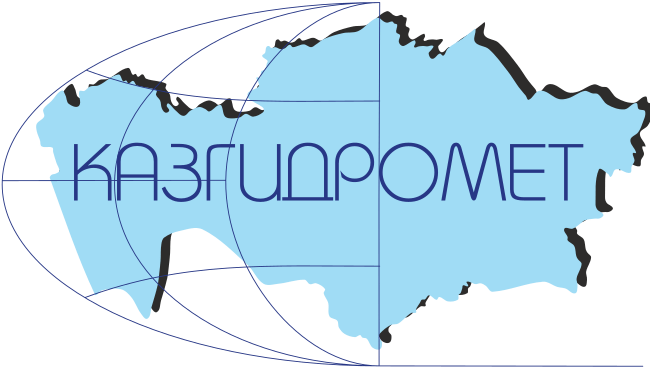METHOD OF ASSESSING INDIRECT ANTHROPOGENIC LOADS IN RIVER BASIN CATCHMENT AREAS USING THE GENERALIZED HARRINGTON DESIRABILITY FUNCTION
DOI:
https://doi.org/10.54668/2789-6323-2025-119-4-14-21Keywords:
river basin catchment, assessment of indirect anthropogenic loads, generalization of the Harrington function, anthropogenic loads, assessment scaleAbstract
The subject of the study is the processes of assessing indirect anthropogenic loads in the catchment area of river basins by applying a point scale of desirability using the method of constructing a generalized indicator. The purpose of the article is to develop a methodological approach to assessing indirect anthropogenic loads in the catchment area of river basins based on the generalized Harrington desirability function. The objective of the article is to analyze existing approaches to assessing indirect anthropogenic loads in the catchment area of river basins, methodological aspects of using the generalized desirability index and justification for using the generalized Harrington function. The developed method for assessing indirect anthropogenic loads on the territory of the catchment area of river basins makes it possible to avoid an additive integral assessment indicator and can be used to solve many problems, and is also applicable for territorial organization and management of water use.
References
Falkenmark M. (1986). Fresh water: Time for a modified approach. M. Falkenmark: Ambio, рр. 192-200.
Raskin P., Gleick P., Pontius G., Strzepek K. (1977). Water Futures: Assessment of Long-range Pattens and Problems. Stockholm: Stockholm Environmental Institute, 77 р.
Danilov-Danilyan V.I., Losev K.S. (2006). Potreblenie vody: ekolog., ekon., soc. i polit. aspekty [Water consumption: environmental, economic, social and political aspects]. M.: Nauka, 221 p. [in Russian].
Shiklomanov I.A. (2008). Vodnye resursy Rossii i ego ispol'zovanie [Water resources of Russia and their use]. St. Petersburg: State Hydrological Institute, 600 p. [in Russian].
Boulay A, Bare J, Benini L, Berger M, Klemmayer I, Lathulliere M, Loubet P, Manzardo A, Margni M., Ridoutt B. (2014). Building consensus on a generic water scarcity indicator forLCA-based water footprint: preliminary results from WULCA 9th Int. Conf. LCA Food San Fr.USA, 8-10 Oct. 2014 2050, pp. 8
Mustafaev Zh. S. Sovershenstvovanie metodov ocenki vodoobespechennosti vodosbornyh territorij rechnyh bassejnov s uchetom ekologicheskogo priznaka vodopol'zovaniya [Improvement of methods for assessing water availability in river basin catchment areas, taking into account the environmental aspect of water use]. V sbornike: Ustojchivoe razvitie territorij: teoriya i praktika. materialy III Mezhdunarodnoj nauchno-prakticheskoj konferencii. g. Sibaj, 2022, pp. 120-122 [in Russian].
Hernández-Bedolla J., Solera A., Paredes-Arquiola J., Pedro-Monzonis M., Andreu J., Sfnchez-Quispe S.T. (2017). The assessment of sustainability indexes and climate change impacts on integrated water resource management. Water, 9(3), pp. 213. https;//doi.org/10.3390./w 9030213.
Damkjaer S.,Taylor R. (2017). The measurement of water scarcity: Defining a meaningful indicator. Ambio 46, pp. 513–531
Karamouz M., Mohammadpour P., Mahmoodzadeh D. (2017). Assessment of sustainability in water supply-demand considering uncertainties. Water Resources Management, 31, pp. 3761-3778. https://doi.org/10.1007/s11269-017-1703-9
Oxley R.L., Mays L.W. (2017). Sustainability index for the management of river basins based upon ecological, environmental andhydrological integrity and the minimization of long term risks to supply. Environment and Natural Resources Research, 7(4), pp. 1-16.
Kourgialas N.N., Karatzas G.P., Dokou Z., Kokorogiannis A. (2018). Groundwater footprint methodology as policy tool for balancing water needs (agriculture & tourism) in water scarce islands-The case of Crete, Greece. Science of the Total Environment, 615, pp. 381-389. https://doi.org/10.1016/j.scitotenv. 2017.09.308
Felipe I. Arreguin-Cortes, Raul Saavedra-Horita J., Manuel Rodriguez-Varela J. Velitchko G. Zatchkov, Petronilo E. Cortez-Mejia, Oscar J. Llaguno-Guilberto, Arizabeth Sainos-Candelario. (2020). State level water security indices in Mexico. Sustainable Earth 3:9 https://doi.org/10.1186/s42055-020-00031-4
Moyle B.D., Weaver D.B., Gössling S., McLennan C.L., Hadinejad A. (2022). Are water-centric themes in sustainable tourism research congruent with the UN Sustainable Development Goals? Journal of Sustainable Tourism, 30(8), pp. 1821-1836.
Salehie O., Ismail T.B., Shahid S., Hamed M.M., Chinnasamy P., Wang X. (2022). Assessment of water resources availability inAmu Darya River basin using GRACE data. Water, 14(4), pp. 533. https://doi.org/10.3390/w14040533
Sabia G., Mattioli D., Langone M., Petta L. (2023). Methodology for a preliminary assessment of water use sustainability inindustries at sub-basin level. Journal of Environmental Management, 343, pp. 118163.https://doi.org/10.1016/j. jenvman. 2023.118163
Jiang M., Wu Z., Guo X., Wang H., Zhou Y. (2023). Study on the Contribution of Land Use and Climate Change to Available Water Resources in Basins Based on Vector Autoregression (VAR) Model. Water, 15(11), pp. 2130.
Mustafayev Zh., Medeu A., Skorintseva I., Bassova T., Aldazhanova G. (2024). Improvement of the Methodology for the assessment of the agro-resource potential of agricultural landscapes. Sustainability, Vol. 16, No.1. pp. 419-435.
Mustafayev Zh., Skorintseva I., Toletayev, A., Aldazhanova G.,Kuderin A. (2024). Comprehensive assessment of water supply of the Turkestan region for the development of economic sectors and recreational tourism. GeoJournal of Tourism and Geosites, Vol. 52, No. 1. pp. 20-29.
Isachenko A.G. (2001). Ekologicheskaya geografiya Rossii [Ecological geography of Russia]. SPb.: Publishing house of SPbSU. 328 p. [in Russian].
Rybkina I.D., Stoyashcheva N.V., Kurepina N.Yu. (2011). Metodika zonirovaniya territorii rechnogo bassejna po sovokupnoj antropogennoj nagruzke (na primere Ob'-Irtyshskogo bassejna) [Methodology for zoning the territory of a river basin based on the total anthropogenic load (on the example of the Ob-Irtysh basin)]. Water management of Russia, No. 4. pp. 42-52 [in Russian].
Odesser S.V. (1991). Territorial'naya differenciaciya v ekonomiko-geograficheskih tipologiyah [Territorial differentiation in economic-geographical typologies]. Bulletin of the USSR Academy of Sciences. Geographical series, No. 6. pp. 61-69 [in Russian].
Mustafayev Zh.S., Kozykeeva A.T., Ivanova N.Yu., Esmakhanov M.K., Tursynbaev N.A. (2017). Ocenka tekhnogennoj nagruzki na vodosbornuyu ploshchad' transgranichnogo bassejna reki Talas na osnove integral'nyh pokazatelej antropogennoj deyatel'nosti [Assessment of technogenic load on the catchment area of the transboundary Talas River basin based on integral indicators of anthropogenic activity]. Bulletin of the NAS RK, series of agricultural sciences, No. 2. pp. 48-56 [in Russian].
Mustafayev Zh.S., Kireycheva L.V., Abdeshev K.B., Tursynbaev N.A. (2022). Ocenka antropogennoj nagruzki na vodosbornuyu ploshchad' transgranichnogo rechnogo bassejna Assa-Talas [Assessment of anthropogenic load on the catchment area of the Assa-Talas transboundary river basin]. International technical and economic journal, No. 3. pp.46-61 [in Russian].
Harington J. (1965). The Desirability Function. Industrial Quality Control, Vol. 21, No. 10. pp. 494–498.
Pichkalev A.V. (2012). Obobshchennaya funkciya zhelaemosti Harringtona dlya sravnitel'nogo analiza tekhnicheskih sredstv [Generalized Harrington desirability function for comparative analysis of technical means]. Research of the science city. No. 1 (1). pp.25-28 [in Russian].
Akhnazarova S.L., Gordeev L.S. (2003). Ispol'zovanie funkcii zhelaemosti Harringtona pri reshenii optimizacionnyh zadach himicheskoj inzhenerii [Using the Harrington Desirability Function in Solving Optimization Problems of Chemical Engineering]. Textbook. Moscow: Mendeleyev University of Chemical Technology. 76 p. [in Russian].
Vorobeychik E.P., Sadykov O. F. Farafontov M.G. (1994). Ekologicheskaya standartizaciya tekhnogennogo zagryazneniya nazemnyh ekosistem (lokal'nyj uroven') [Environmental Standardization of Technogenic Pollution of Terrestrial Ecosystems (Local Level)]. Yekaterinburg: Nauka, 280 p. [in Russian].
Opekunov A. Yu., Opekunova M.G. (2014). Kompleksnaya ocenka zagryazneniya landshafta s ispol'zovaniem funkcii zhelatel'nosti Harringtona [Integral Assessment of Landscape Pollution Using the Harrington Desirability Function]. Bulletin of St. Petersburg University. Ser. 7. Issue. 4. pp. 101-113 [in Russian].
Lyubushin N.P., Brikach G.E. (2014). Ispol'zovanie obobshchennoj funkcii zhelaemosti Harringtona v mnogoparametricheskih ekonomicheskih zadachah [Using the Generalized Harrington Desirability Function in Multiparameter Economic Problems]. Economic Analysis: Theory and Practice. No. 18 (369). pp. 2-10 [in Russian].
Shumetov V.G. (2004). Analiz dannyh v upravlenii: lekcionnyj kurs [Data Analysis in Management: Lecture Course]. Orel: ORAGS. 156 p. [in Russian].
Rybkina I.D., Stoyashcheva N.V. (2010). Ocenka antropogennoj nagruzki na vodosbornyj bassejn verhnej i srednej techeniya Obi [Assessment of Anthropogenic Load on the Catchment Area of the Upper and Middle Ob]. The World of Science, Culture and Education. No. 6 (25). Part 2. pp. 295-299. [in Russian].
Downloads
Published
How to Cite
Issue
Section
License
Copyright (c) 2025 Жумахан Мустафаев, Канат Мустафаев

This work is licensed under a Creative Commons Attribution-NonCommercial 4.0 International License.





